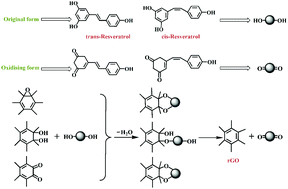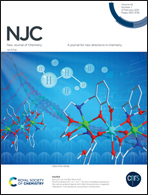Green and facile preparation of graphene/resveratrol/polyaniline composites for high-performance supercapacitors
Abstract
In recent years, graphene-based supercapacitors have become one of the most promising new energy devices. However, the re-stacking of graphene during the preparation process and the toxicity of reducing agents limit its further development. Therefore, in this work, we used resveratrol (RA), a novel and green reducing agent, to prepare reduced graphene oxide (rGO). The results of X-ray diffraction (XRD), ultraviolet-visible (UV-vis) spectroscopy and Raman spectroscopy proved that the reducing effect of RA is equivalent to that of hydrazine hydrate (HH). Subsequently, the composite was prepared and cyclic voltammetry (CV) and galvanostatic charge–discharge (GCD) tests were conducted to study the electrochemical performance. The results show that the composite reduced by RA for 24 hours exhibits the largest specific capacitance (916 F g−1 at 1 A g−1), which is higher than that of the composite reduced by HH (822 F g−1 at 1 A g−1), and has the best rate performance and stable cycle performance (retention rate is 87.24% after 10 000 cycles). A symmetric supercapacitor was assembled with the obtained composites reduced by RA exhibiting a maximum specific capacitance of 461 F g−1 at 1 A g−1, an energy density of 31.38 W h kg−1 at 0.701 kW kg−1, and ultrahigh-rate performance (retained 61.4% capacitance at 40 A g−1).



 Please wait while we load your content...
Please wait while we load your content...